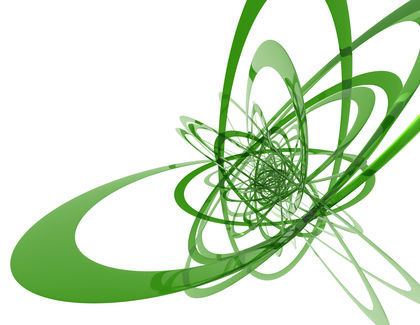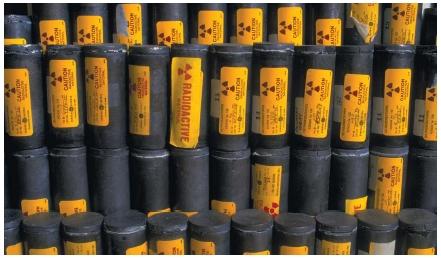Noble gases

The noble gases are the six elements that make up Group 18 of the periodic table: helium (He), neon (Ne), argon (Ar), krypton (Kr), xenon (Xe), and radon (Rn). At one time, this family of elements was also known as the rare gases. Their present name comes from the fact that the six gases are highly unreactive; they appear almost "noble"—above interacting with other members of the periodic table. This lack of reactivity has also led to a second name by which they are sometimes known—the inert gases. (Inert means inactive.)
Abundance and production
As their former name suggests, the noble gases are rather uncommon on Earth. Collectively, they make up about 1 percent of Earth's atmosphere. Most of the noble gases have been detected in small amounts in minerals found in Earth's crust and in meteorites. They are thought to have been released into the atmosphere long ago as by-products of the decay of radioactive elements in Earth's crust. (Radioactivity is the property that some elements have of spontaneously giving off energy in the form of particles or waves when their nuclei disintegrate.)
Of all the rare gases, argon is present in the greatest amount. It makes up about 0.9 percent by volume of Earth's atmosphere. The other noble gases are present in such small amounts that it is usually more convenient to express their concentrations in terms of parts per million (ppm). The concentrations of neon, helium, krypton, and xenon are, respectively, 18 ppm, 5 ppm, 1 ppm, and 0.09 ppm. For example, there are only 5 liters of helium in every million liters of air. By contrast, helium is much more abundant in the Sun, stars, and outer space. In fact, next to hydrogen, helium is the most abundant element in the universe. About 23 percent of all atoms found in the universe are helium atoms.
Radon is present in the atmosphere in only trace amounts. However, higher levels of radon have been measured in homes around the United States. Radon can be released from soils containing high concentrations of uranium, and they can be trapped in homes that have been weather sealed to make heating and cooling systems more efficient. Radon testing

kits are commercially available for testing the radon content of household air.
Most of the rare gases are obtained commercially from liquid air. As the temperature of liquid air is raised, the rare gases boil off from the mixture at specific temperatures and can be separated and purified. Although present in air, helium is obtained commercially from natural gas wells where it occurs in concentrations of between 1 and 7 percent of the natural gas. Most of the world's helium supplies come from wells located in Texas, Oklahoma, and Kansas. Radon is isolated as a product of the radioactive decay of radium compounds.
Properties
The noble gases are all colorless, odorless, and tasteless. They exist as monatomic gases, which means that their molecules consist of a single atom apiece. The boiling points of the noble gases increase in moving down the periodic table. Helium has the lowest boiling point of any element. It boils at 4.215 K (−268.93°C). It has no melting point because it cannot be frozen at any temperature.
The most important chemical property of the noble gases is their lack of reactivity. Helium, neon, and argon do not combine with any other elements to form compounds. It has been only in the last few decades that compounds of the other rare gases have been prepared. In 1962 English chemist Neil Bartlett (1932–) succeeded in preparing the first compound of a noble gas, a compound of xenon. The compound was xenon platinofluoride (XePtF 6 ). Since then, many xenon compounds containing mostly fluorine or oxygen atoms have also been prepared. Krypton and radon have also been combined with fluorine to form simple compounds. Because some noble gas compounds have powerful oxidizing properties, they have been used to synthesize other compounds.
The low reactivity of the noble gases can be explained by their electronic structure. The atoms of all six gases have outer energy levels containing eight electrons. Chemists believe that such arrangements are the most stable arrangements an atom can have. Because of these very stable arrangements, noble gas atoms have little or no tendency to gain or lose electrons, as they would have to do to take part in a chemical reaction.
Uses
As with all substances, the uses to which the noble gases are put reflect their physical and chemical properties. For example, helium's low density and inertness make it ideal for use in lighter-than-air craft such as balloons and dirigibles (zeppelins). Because of the element's very low boiling point, it has many applications in low-temperature research and technology. Divers breathe an artificial oxygen-helium mixture to prevent the formation of gas bubbles in the blood as they swim to the surface from great depths. Other uses for helium have been in supersonic wind tunnels, as a protective gas in growing silicon and germanium crystals and, together with neon, in the manufacture of gas lasers.
Neon is well known for its use in neon signs. Glass tubes of any shape can be filled with neon. When an electrical charge is passed through the tube, an orange-red glow is emitted. By contrast, ordinary incandescent lightbulbs are filled with argon. Because argon is so inert, it does not react with the hot metal filament and prolongs the bulb's life. Argon is also used to provide an inert atmosphere in welding and high-temperature metallurgical processes. By surrounding hot metals with inert argon, the metals are protected from potential oxidation by oxygen in the air.
Krypton and xenon also find commercial lighting applications. Krypton can be used in incandescent lightbulbs and in fluorescent lamps. Both are also employed in flashing stroboscopic lights that outline commercial airport runways. And because they emit a brilliant white light when electrified, they are used in photographic flash equipment. Due to the radioactive nature of radon, it has medical applications in radiotherapy.
[ See also Element, chemical ; Periodic table ]
thank you,
Charlee
Last minute extra credit project, and I got all my answers here! :]]
Thanks!
-A
Chemistry
e
this information had a very helpful Influence in my presentation in the university and harvard would love it.